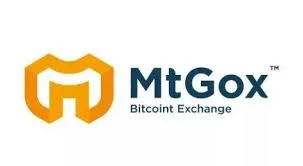In a remarkable turn of events, former customers of the bankrupt crypto exchange Mt. Gox are on the brink of recovering their long-lost bitcoin.
The journey, marked by confusion, legal battles, and financial distress, is finally culminating in a $9 billion windfall. This article delves into the intricate saga of Mt. Gox, exploring the highs and lows faced by its users over the past decade.
The Sudden Collapse of Mt. Gox
In late February 2014, Daniel, a European university student, was trading bitcoin on Mt. Gox when the website suddenly became unresponsive. As panic spread among users, speculation on internet forums like Bitcoin Talk revealed the shocking truth: Mt. Gox was in serious trouble. By February 28, the Tokyo-based exchange filed for bankruptcy, disclosing that hundreds of thousands of bitcoin, worth around $400 million at the time, had been stolen.
For customers like Daniel, the collapse was devastating. He had invested almost all his wealth in Mt. Gox, relying on the funds to support his education. The bankruptcy announcement triggered a period of depression and financial desperation, leading him to resort to credit card fraud before eventually securing a stable job.
The Decade-Long Ordeal
The collapse of Mt. Gox initiated a Kafkaesque process for its customers, who spent the next decade navigating a complex and bureaucratic reorganization in hopes of reclaiming their bitcoin. Many, like Daniel, struggled with repeated delays, confusion, and a profound sense of helplessness. Speaking under pseudonyms for financial privacy, eight former customers shared their harrowing experiences with WIRED.
The Road to Recovery
On June 24, 2023, Nobuaki Kobayashi, the trustee managing Mt. Gox’s estate, announced that crypto repayments would commence in July. This marks a significant milestone for former customers, as the first movements of the coins began on a Friday. Despite only receiving roughly 15% of their original holdings due to the limited recovery of bitcoin, the dramatic increase in bitcoin’s value over the years means that the dollar value of these repayments is substantial—around $9 billion in total.
The Genesis of Mt. Gox
Mt. Gox was established in 2010 by Jed McCaleb, an early bitcoin adopter from the US. In 2011, McCaleb sold the exchange to Mark Karpelès, a young French developer who transformed it into the world’s largest bitcoin exchange by 2013. However, by the end of that year, rumors of operational problems began to circulate.
The Downfall
On February 7, 2014, Mt. Gox suspended bitcoin withdrawals for maintenance. Two weeks later, amidst growing customer frustration, Karpelès announced the company’s bankruptcy, revealing that systemic weaknesses had led to the loss of their bitcoins. The subsequent decade was marked by a grueling process of attempting to recover the stolen funds.
Legal and Operational Hurdles
Initially, Mt. Gox followed a traditional bankruptcy process, valuing customer claims in Japanese yen based on bitcoin’s 2014 price. However, to allow customers to benefit from bitcoin’s price increase, the bankruptcy was converted to a civil rehabilitation in 2018, requiring claims to be refiled. The process was fraught with delays and complications, including the need to distinguish legitimate claims from fraudulent ones.
Customers faced infrequent progress updates, often in broken English, adding to the frustration. They were also targeted by scammers and hackers posing as agents of the estate. The Mt. Gox estate held 200,000 bitcoin recovered from a previously “forgotten” wallet, but repayments were delayed further by a legal battle with CoinLab, a company seeking financial damages over a breach of contract.
A Ray of Hope
In 2021, a compromise allowed customers to opt for an earlier payout in cash and crypto, even if it meant forgoing potential future gains. For many, this decision was straightforward. “I’m not going to live forever. I would rather get some money while I’m alive,” said Michael, a US-based customer.
Conclusion
The return of Mt. Gox bitcoin marks the end of a long and arduous journey for its former customers. Despite the significant financial and emotional toll, the recovery process highlights the resilience and perseverance of the affected individuals. As the crypto community watches this historic event unfold, it serves as a poignant reminder of the volatility and risks inherent in the world of digital currencies.
More Updates: Cryptocurrency


